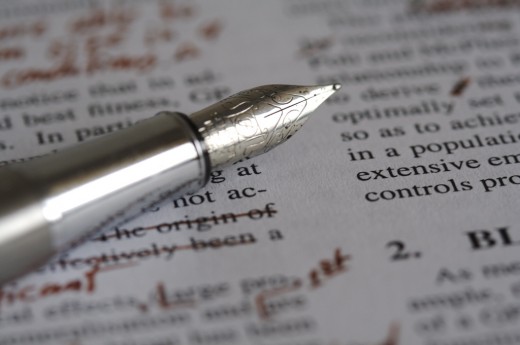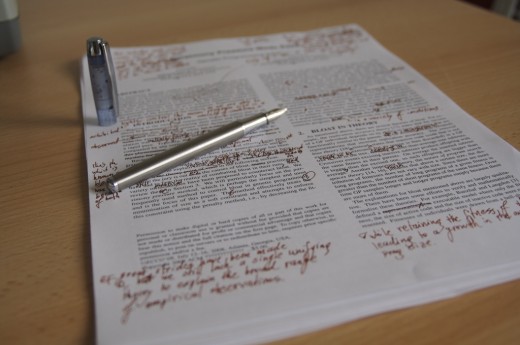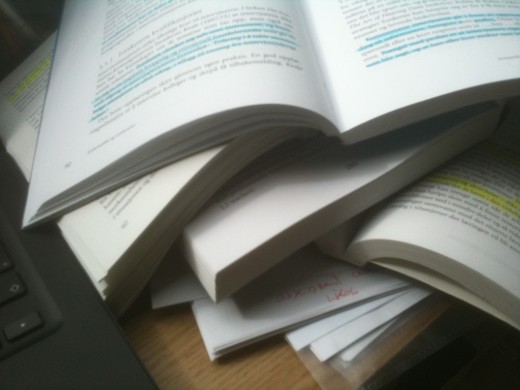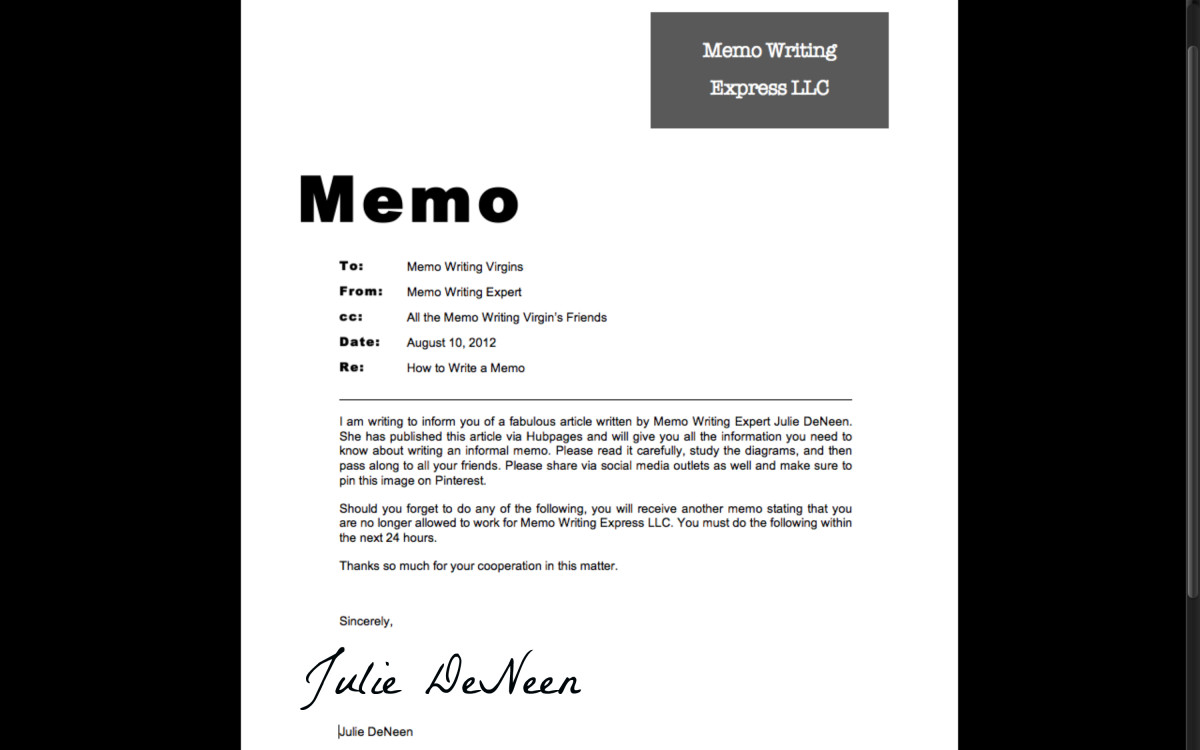How to Cite: APA Format for Citations and References

Knowing APA format for citations and references is essential in academic writing. The American Psychological Association came up with guidelines that writers may use in their research papers to enable readers to locate the sources used in the easiest and clearest way possible. Citations tell the readers where the information comes from. In addition, the reference provides them with an understanding of what the source is and where to find it if necessary.
APA format for citations and references is the best ways to acknowledge other people's work that has influenced an academic paper. Writers have to credit the source of their ideas, research or theories in citations and the reference list. Whether they are paraphrasing or directly quoting, they have to refer to the main source.
Similarly, this applies to writers who use ideas from their previous work. Moreover, references imply that the writer has personally read the sources. Citations and references help writers avoid plagiarism. This is why it is important to take note of all sources and cite all relevant information used properly.
~~~~~~~~~~~~~~~~~~~~~~~~~~~~~~~~~~~~~~~~~~~~~~~~~~~~~~~~~~~~~~~~~
APA Format for Citations
The APA style for citations includes the use of authors and dates. Its main purpose is to direct readers to the reference list where they can find the source's complete information. The following are different ways to use the author-date citation system.
1. One Author
If the source only has one author, the writer needs to use the author's last name and the year of publication. The following are some examples.
• Dreams allow humans to discover the unconscious (Freud, 1915).
• Freud (1915) claimed that dreams allow humans to discover the unconscious.
• In 1915, Freud claimed that dreams allow humans to discover the unconscious
2. Two Authors
For citing research or works with two authors, writers have to use both the author's last names with an ampersand between them if enclosed in parentheses.
• Freud's psychoanalytic theory is too focused on pathology and lacks empirical data. (Mahmood & Ahmed, 2012).
• Mahmood and Ahmed (2012) criticized Freud's psychoanalytic theory as too focused on pathology.
• In 2012, Mahmood and Ahmed criticized Freud's psychoanalytical theory in their book Physical Testing and Assessment.
3. Three to Five Authors
If there are three to five authors listed in the source, writers will have to use all author's last names and the year of publication. In subsequent citations, writers may only use the first author's last name followed by et al. and the publication year.
• In the first citation, writers may use (Hoggard, Byrd, & Sellers, 2012) or Hoggard, Byrd and Sellers (2012).
• In subsequent citations, writers may use (Hoggard et al., 2012). However, there is no need to add the publication year if the subsequent citation is used in the same paragraph.
4. Six Authors or More
For sources with more than five authors, there is no need to write all of the author's names. Writers may use the first author then et al. and the publication year.
• (Giamo et al., 2012) or Giamo et al. (2012)
However, it is best that writers use the names of the first author and as many subsequent author names possible. This is especially true if two sources need to be cited with the same publication year. It should then be followed by a comma and et al.
5. Groups as Authors
When citing groups such as a government, corporation or association as authors, the full name has to be used in the first citation. However, it may be abbreviated in subsequent use if it is too long. Writers should make sure that the abbreviation used is official and acceptable.
• On the first citation, writers may use (American Psychological Association, 2012) or American Psychological Association (2012).
• On subsequent citations, writers may abbreviate the associations name like (APA, 2012) or APA (2012).
6. Personal Communication
APA format for citations for personal communications should be avoided as much as possible. This is mainly because it contains information that does not come from a public source. Readers may not be able to trace where it came from. However, it may be cited using the source's last name and initials along with the communication date.
• Writers may use either (T.A. Kurdziel, personal communication, July 13, 2011) or T.A. Kurdziel (personal communication, July 13, 2011).

7. Internet Sources
One of the drawbacks that come with using Internet sources is that webpages may be deleted, moved or changed. With this, it is best that writers keep a hard copy of these sources. They should also make sure that the sites they are taking information from are reliable and accurate. APA format for citations for Internet sources include in-text citation or the author-date system and a reference list entry.
• Author, I. (date). Document title [Format description]. Retrieved from http://www.website.com
8. E-Books
When using e-books as sources, writers should take note the of author, date, title and whether it is DOI (Digital object identifier) or URL. Different APA format for citations are used for whole e-books or just a chapter.
Citing a chapter in an e-book as a source
• Author, I. (date). Chapter title. In E. Editor(Ed), Book title (pp.xx-xxx). doi:xxxxxxxx
• Author, I. (date). Chapter title. In E. Editor(Ed), Book title (pp.xx-xxx). Retrieved from http://www.website.com
Citing the whole e-book as a source
• Author, I. (date). Book title. doi: xxxxxx
• Author, I. (date). Book title. Retrieved from http://www.website.com
9. Direct Quotes
Writers should not use direct quotes often. If they do, they should limit quotes to 40 words with quotation marks. APA format for citations dictates that quotes should be placed in a double-spaced text block indented five spaces without quotation marks from the left margin. Page numbers should also be included.
• “quote” (Freud, 1915, p. 132)
• Freud (1915) claimed that “quote” (p.132)
APA Format Citations-Sixth (6th) Edition
~~~~~~~~~~~~~~~~~~~~~~~~~~~~~~~~~~~~~~~~~~~~~~~~~~~~~~~~~~~~~~~~~
APA Format for References
The APA format for references is comprised of author names, publication dates, work titles and publication data. The reference list is the last page in a research paper. APA suggests that writers only use the most recent versions. Digital object identifiers and URLs are also essential. URLs may be used if a DOI is not available.
Writers can cite references like conference proceedings, a chapter in an edited book, a whole book, a whole journal issue and journal articles. They may also include other materials like book reviews, podcasts and dissertations.
1. Journal Articles
When citing journal articles, both the volume number and the article title are italicized. The journal's issue number should be enclosed in parentheses if present. The DOI will still be placed at the end as doi:xxxxxxxxx. Similarly, a URL can be placed using Retrieved from http://www.website.com.
2. Whole Issue of a Journal
Writers who use the whole issue of a journal as a source should follow the APA format for references that include the editor's name and the issues title. However, there are some journal issues that do not provide the editor's name. With this, writers can just move the title to the author's position.
3. Chapter in an Edited Book
APA format for references from an edited book include the chapter title that is followed by the word In, the editor's name and Ed enclosed in parentheses. The book's title then follows. Writers should also include the exact page number where they took the information from in parentheses.
4. Citing a Whole Book
When using the whole book as a source, writers should provide the book's title as a sentence. However, those who are citing an e-book should provide details about the format in square brackets following the title. In addition, the URL or DOI should be added to the end in lieu of the publisher's name and location.
5. Conference Proceedings
Writers may use conference proceedings as a reference. They may use the same APA format for references as they would with a periodical when the conference proceedings are regularly published. On the other hand, they may use the same format as a chapter in an edited book if they cite published or book form proceedings.
There are also APA format for citations and references from interviews, Facebook, Twitter and YouTube. Many researchers use these social media sites for their references, and APA has developed special formats for them.
APA Formatting : How to Create a Reference List in APA Style
~~~~~~~~~~~~~~~~~~~~~~~~~~~~~~~~~~~~~~~~~~~~~~~~~~~~~~~~~~~~~~~~~

Citations and references are important because they reflect the researcher's effort. It is also ethical to credit other people's work and their influence on the research. In addition, it will save the writer from any legal obligations and protect them in case they are questioned about their work's content. Although researchers are free to paraphrase ideas, they can't claim them as their own unless the thoughts or ideas are actually theirs. APA format for citations and references is the easiest and most convenient way to present information sources and give them credit. Writers must be responsible enough to take note of all sources they use no matter what the material is. Even if information is from personal communication, it must be given credit.
If you like my article How to Cite: APA Format for Citations and References, please share, rate or comment it. If you have some ideas to improve my hub, please feel free to contact me.








